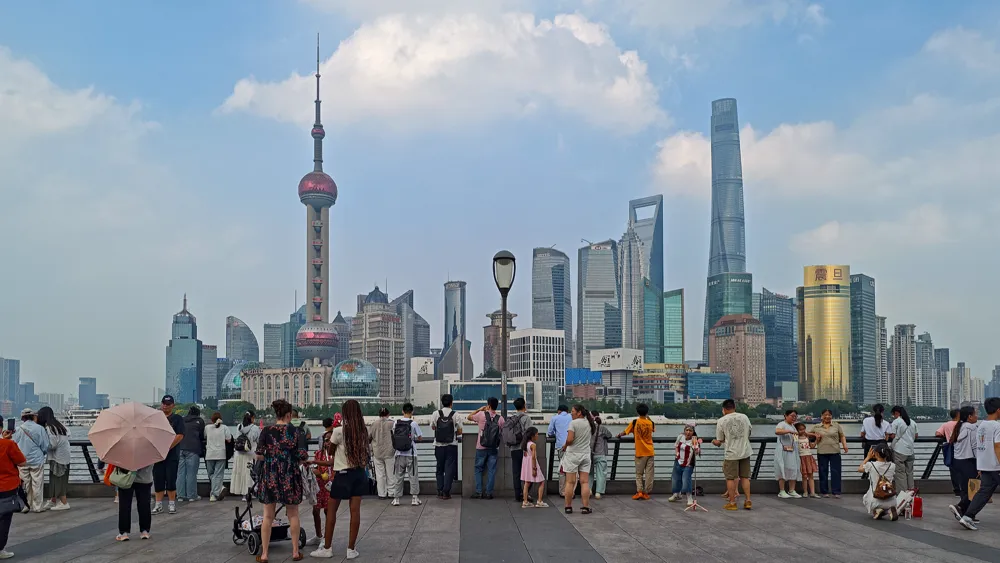China's 14th Five-Year Plan Shapes Economic Tech and Green Growth

As the 14th Five-Year Plan period (2021-2025) nears its conclusion, China has achieved historic milestones in economic resilience, sustainability, and technological advancement. This five-year plan emphasizes not only growth but also the need to align economic policies with environmental and social responsibilities.
Throughout the various iterations of China's five-year plans, priorities have evolved, shifting from industrialization and economic reform towards a greater emphasis on sustainability and innovation. However, the overarching goal remains constant: to enhance national development and prosperity.
The 14th Five-Year Plan signifies a strategic pivot from growth-centric initiatives to promoting high-quality development, acting as a framework for comprehensive progress across different sectors in the nation.
Zheng Shanjie, head of the National Development and Reform Commission (NDRC), remarked at a July 2025 press conference that the past five years have been characterized by pioneering progress and transformative breakthroughs, positioning China as a cornerstone of global development.
Looking to the future, China's economic growth is projected to exceed 35 trillion yuan, roughly 4.89 trillion dollars, accounting for approximately 30 percent of annual global economic output. Over the preceding four years, the country experienced an average annual growth rate of 5.5 percent, reflecting a significant achievement considering its large economic scale.
This growth momentum is notably driven by robust domestic demand, which constituted 86.4 percent of the average GDP increase. Furthermore, final consumption accounted for 56.2 percent, an uptick of 8.6 percentage points from the previous plan, underscoring the vibrant nature of China's consumer market.
In addition to economic growth, tangible improvements in living standards have been observed, with urban job creation exceeding 12 million annually. Moreover, healthcare advancements have progressed with the establishment of 114 national-level regional medical centers, directly benefiting more than 400 million individuals.
Focusing on innovation, China made significant investments in research and development during this period, reaching an unprecedented level. By 2024, R&D spending had surged by nearly 50 percent compared to the previous plan, indicating a strong commitment to technological advancement.
Milestones in technology include the launch of the world's first fourth-generation nuclear power plant and significant achievements in aerospace, such as the successful return of samples from the moon via the Chang'e-6 lunar probe. These innovation benchmarks illustrate China's growing influence in global technology.
Green development has been a core component of the 14th Five-Year Plan, with China surpassing its sustainability commitments. From 2021 to 2024, energy consumption per unit of GDP fell by 11.6 percent, resulting in a significant reduction of approximately 1.1 billion tonnes of carbon emissions, highlighting China's dedication to combating climate change.
With renewable energy capacity reaching 2.09 billion kilowatts, and the adoption of new energy vehicles skyrocketing, China is reinforcing its position as a global leader in sustainable initiatives. The success of green development efforts has become a defining feature of high-quality development under this five-year plan, paving the way for future advancements.
Read These Next

China Eases Semiconductor Export Controls, Boosting Supply Chains
Exploring China's recent policy changes on semiconductor exports and their implications for the automotive industry and global supply chains.

iPhone Pocket: Pricey or Trendy?
This article explores the implications of Apple's new iPhone Pocket accessory, which faces criticism for its high price and minimalistic design, and what this reveals about brand loyalty and market trends in luxury tech fashion.

FOCAC Showcases Cutting-edge Technology to Guests and Media
At the 2024 FOCAC Summit, China showcased innovations like a humanoid robot and 8K HD virtual flights, enhancing diplomacy.
